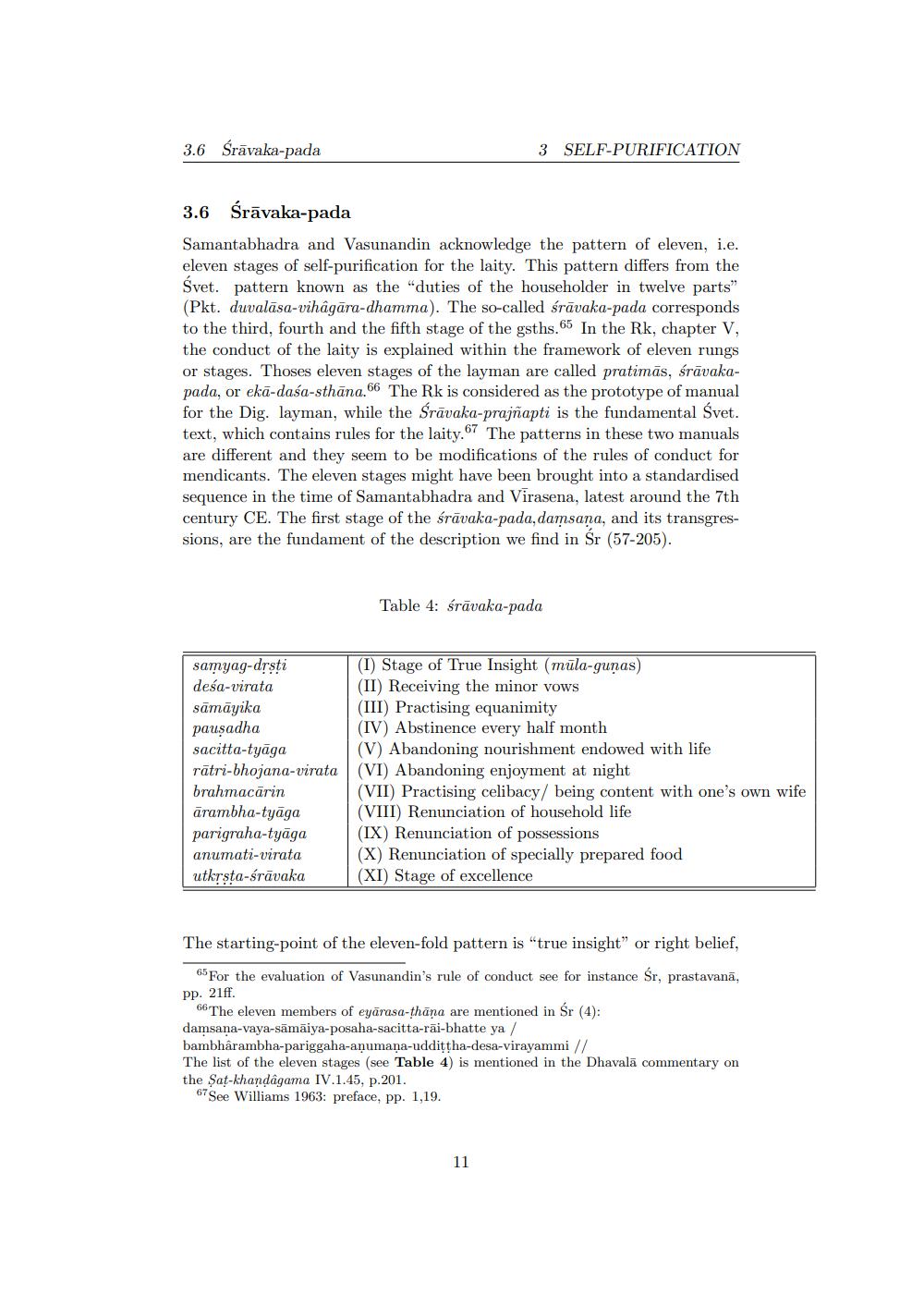________________
3.6 Srävaka-pada
3.6 Śrävaka-pada
Samantabhadra and Vasunandin acknowledge the pattern of eleven, i.e. eleven stages of self-purification for the laity. This pattern differs from the Śvet. pattern known as the "duties of the householder in twelve parts" (Pkt. duvalasa-vihāgara-dhamma). The so-called śravaka-pada corresponds to the third, fourth and the fifth stage of the gsths.65 In the Rk, chapter V, the conduct of the laity is explained within the framework of eleven rungs or stages. Thoses eleven stages of the layman are called pratimās, śrāvakapada, or eka-dasa-sthāna. 66 The Rk is considered as the prototype of manual for the Dig. layman, while the Śravaka-prajñapti is the fundamental Śvet. text, which contains rules for the laity.67 The patterns in these two manuals are different and they seem to be modifications of the rules of conduct for mendicants. The eleven stages might have been brought into a standardised sequence in the time of Samantabhadra and Virasena, latest around the 7th century CE. The first stage of the śravaka-pada, damsana, and its transgressions, are the fundament of the description we find in Śr (57-205).
samyag-drsti deśa-virata
sümüyika
pausadha
sacitta-tyāga rātri-bhojana-virata
brahmacārin
arambha-tyaga parigraha-tyäga anumati-virata utkysta-érävaka
3 SELF-PURIFICATION
Table 4: frävaka-pada
(I) Stage of True Insight (mula-gunas) (II) Receiving the minor vows
(III) Practising equanimity
(IV) Abstinence every half month
(V) Abandoning nourishment endowed with life
(VI) Abandoning enjoyment at night
(VII) Practising celibacy/ being content with one's own wife
(VIII) Renunciation of household life
(IX) Renunciation of possessions
(X) Renunciation of specially prepared food (XI) Stage of excellence
The starting-point of the eleven-fold pattern is "true insight" or right belief,
65 For the evaluation of Vasunandin's rule of conduct see for instance Śr, prastavanā,
pp. 21ff.
66 The eleven members of eyarasa-thāna are mentioned in Śr (4): damsana-vaya-samaiya-posaha-sacitta-rai-bhatte ya /
bambharambha-pariggaha-anumana-uddittha-desa-virayammi //
The list of the eleven stages (see Table 4) is mentioned in the Dhavala commentary on
the Sat-khandagama IV.1.45, p.201.
67 See Williams 1963: preface, pp. 1,19.
11




